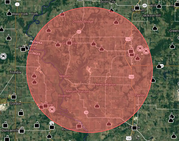 Did you think that once you “complete” your Risk Management Planning (RMP) and Process Safety Management (PSM) programs there is no more work to be done? Often, regulatory requirements are thought of as one and done. You prepare the document and its done, you don’t have to look at it again for five years. Not in this case. These programs require vigilance, especially if the processes at your facility often change. For starters, both PSM and RMP include periodic actions that must be completed regularly. Here’s an abbreviated listing:
So, as you can see with this truncated list of periodic requirements, there is a lot to do after the main part of the program is established. I will say this, it gets a little easier as personnel understand what is expected of them and adopt a PSM/RMP safety culture. One final thought. Remember to document all of your reviews and date all of your changes. The old saying still holds true. If it wasn’t documented and you can’t prove a review took place, it didn’t happen. 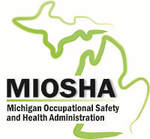 The OSHA PSM Standard (29 CFR 1910.119) is a “performance” standard rather than a “prescriptive” standard. In other words, the standard doesn’t tell you exactly what to do, such as when to collect a sample or log temperature. Rather, the PSM Standard requires you to achieve a certain level of performance. Then it is up to you to figure out how to maintain performance at that level. MIOSHA has adopted these regulations in GI Part 91 and OH Part 591. The PSM Standards consist of 14 “Elements.” These “elements” are broad categories of compliance, like “Training” and “Employee Participation", each having its own set of requirements and goals that you set and then meet. “14 elements!,” you sigh and think, “how am I going to get all of this work done when there is only one of me!” Let’s begin to answer with this – start with OSHA’s guide for small businesses entitled, Process Safety Management for Small Businesses. A copy can be found here. In this guide OSHA identifies Process Safety Information (PSI), Process Hazards Analysis (PHA), Training, Mechanical Integrity (MI), and Compliance Audits as the elements most relevant to hazards associated with small businesses. Although all 14 elements will eventually need to be completed, this is a good place to start your PSM Program development. Why do you think OSHA started with these elements? Well, because by doing them you will be successful at making a good product and preventing your employees and neighbors from exposure to a highly hazardous chemical. Process Safety Information (PSI) PSI includes a variety of information about your system, such as design and operating specifications for piping, vessels, valves and gauges. It includes drawings (P&IDs) showing the system layout, process flow and safety systems. This information will help your operators know when the system is operating in the sweet spot and when something is going wrong? The P&IDs will enable you to look up information about your system and see how its pieces and parts fit together and flow. Your maintenance team will be able to order and install the right equipment because they will know what design specifications they need for replacement parts. It is fairly straightforward. Your PSI and all the information about your system needs to be accurate and kept up to date because the rest of your PSM program is built around the PSI information. Process Hazard Analysis Why do you need a PHA? Why can’t I just copy the PHA from the plant down the road that is really similar to mine? Because one size does not fit all. Even though some systems are considered “Off-the-shelf,” your equipment numbering system will likely be different and your system probably won’t have exactly the same configuration for piping, valves and safety equipment. Each system is different, so you cannot just copy another PHA and call it your own. Besides, your team has to go through the exercise. The PHA is a great learning and exploratory opportunity and a great tool for identifying weaknesses, even in the best systems. And, believe me, by the end of the PHA your team will discover weaknesses and things they didn’t know about before the exercise started. Mechanical Integrity Effective preventative maintenance is one of the best ways to keep the highly hazard substance in your PSM regulated system and avoid deadly and costly accidents associated with worn valves, piping and gauges. This includes inspections of system components, exercising valves, ensuring gauges are working correctly and timely replacement of worn components. Training of the maintenance technicians keeps them safe and ensures replacements and repairs are done according to established codes and specifications. Training Training is obvious, I think. Does a front desk receptionist need the same training as a maintenance technician? No. Staff and operations personnel need to be trained to the level of their involvement with the system. Everyone, at a minimum, needs to understand what their responsibilities are and what to do during normal operations and during emergencies. Office personnel need to know the dangers of the chemicals they are working near and what to do during an emergency. Compliance Audits If the suggested elements in the small business guidance document supposedly have something to do with the information about the system, why are compliance audits included in this list? Probably because an audit is a good place to figure out where you are in the whole process of developing a PSM Program. Or if you happen to have a mature program, an audit is a good way to have a fresh set of eyes review the program to identify opportunities for improvement or to check if the documents describe the activities actually implemented at your facility. Remember the old industry adage, Plan Do Check? This is the check part. Operating Procedures Another element I feel is important, but, is not in the OSHA guide as one of the five important elements mentioned earlier, is standard operating procedures (SOPs). This element, when done correctly, helps you make good product or refrigerate efficiently. If your procedures are wrong or ignored, it can result in employee injuries, equipment damage, raw material wastes and allot of wasted process time and money. On top of that, training of operators is critical, so they know how to keep the system in the sweet spot, how to recognize out-of-control conditions and then how to respond in a way that shuts the system down safely or brings it back under control. Oh, and they are a great training tool, too. So, you tell me if operating procedures are important or not. It is a big job, but it doesn’t have to be overwhelming. By now you realize you alone cannot develop and implement a PSM program. It takes a team of operators, mechanics, engineers, their managers and of course, you, the compliance professional to get it all done. SRM’s PSM professionals have been helping clients with their PSM programs for 20 years. We can evaluate your program, prioritize your opportunities for improvement and help you ensure your PSM program is effective and compliant. Just give us a call and we’ll show you how!  Some economists say a little inflation is a good thing. Well, when it comes to regulatory compliance, or in this case non-compliance, it can be a bad thing. In accordance with the Federal Civil Penalties Inflation Adjustment Improvements Act of 2015, the Department of Labor is required to adjust penalties for inflation each year. As a result, OSHA announced that the new penalty amounts, adjusted for inflation, as of Jan. 2, 2018. New penalties for willful and repeat violations are $129,336 per violation. Serious, other-than-serious, and posting requirements are $12,934 per violation. Failure to correct violations are $12,934 for each day the conditions continue. These same penalties will be coming soon to a state program near you. More information can be found on the OSHA web page. MIOSHA announced that it will follow the recently published OSHA memorandum concerning enforcement of the Construction Silica Standard. The OSHA memo emphasizes a few positive and important points for employers:
A few important things to keep in mind:
MIOSHA, announced on September 22nd that it will follow the OSHA Memorandum including the enforcement date. OSHA began enforcing most provisions of the standard for construction on September 23, 2017, and will begin enforcing most provisions of the standard for general industry and maritime on June 23, 2018. MIOSHA regulations for silica in construction can be found in Part 690 Silica in Construction. Silica requirements for general industry can be found in Part 590 Silica in General industry. Link to Memo OSHA has released a Small Entity Compliance Guide for General Industry and Maritime to help small business employers comply with the agency's Final Rule to Protect Workers from Exposure to Respirable Crystalline Silica. The guide describes the steps that employers are required to take to protect employees in general industry and maritime from the hazards associated with silica exposure. These requirements include:
The compliance guide can be downloaded from the OSHA web site. Federal OSHA Enforcement of the final rule in general industry and maritime is scheduled to begin June 23, 2018. OSHA's online recordkeeping secure website is up and running! In addition, OSHA has proposed to extend the reporting deadline from July 1st to December 1, 2017.
Online Reporting - The Injury Tracking Application (ITA) is now accessible from the OSHA website, where companies will be able to provide the Agency their 2016 OSHA Form 300A information. Click the “Launch ITA” button to get started and set up your account. The ITA page can be found here. The webpage offers three options for submitting data, and includes information on reporting requirements, a list of frequently asked questions, and a link to request assistance with completing the form. Reporting Deadline Extension - OSHA published a notice of proposed rulemaking (82 FR 29261) on June 28, 2017 to extend the deadline for electronically submitting the data to December 1, 2017. The proposed extension provides affected companies sufficient time to familiarize themselves with the electronic reporting system and provides the new administration an opportunity to review the new electronic reporting requirements prior to their implementation. For more information visit the OSHA recordkeeping web page. Maximum penalties for OSHA violations are set to increase for the first time since 1990 as part of overall federal penalty adjustments mandated by Congress last year. The increases cover penalty adjustments for several DOL agencies, including OSHA, MSHA and the Wage and Hour Division.
OSHA's new penalty levels will take effect after August 1st, when the maximum penalty for serious violations will rise from $7,000 to $12,471. The maximum penalty for willful or repeated violations will increase from $70,000 to $124,709. Any citations issued by OSHA after August 1st will be subject to the new penalties if the related violations occurred after November 2, 2015. State programs such as MIOSHA will be required to adjust their penalty levels accordingly. You can read the full article and see more details on penalty categories here. In May 2016, OSHA issued a new Letter of Interpretation for the Process Safety Management (PSM) standard's Recognized and Generally Accepted Good Engineering Practices (RAGAGEP) requirements originally outlined in the PSM Standard (29 CFR 1910.119). OSHA notes that this “memorandum rescinds and replaces the memorandum of the same title dated June 5, 2015.” It is intended to clarify OSHA’s policy but does not include any substantive changes to their enforcement policy related to RAGAGEPs. OSHA does a good job of adding details into the policy that we as practitioners have known for quite some time. The details provided help in making requirements clearer. There is a lot of good information in the revised policy. I just want to touch on a few things here. The first important change to note is this document is now referred to as an “Enforcement Policy” rather than a letter of interpretation or memorandum. There can no longer be any doubt or misinterpretation that the information provided is a requirement rather than just a guideline.
Secondly, it is well known that the PSM regulation is considered a “performance oriented standard.” That means that the regulation does not necessarily outline exactly what you have to do. The Standard defines what has to be accomplished, but it doesn’t tell you exactly how you get there. Instead, it is up to the Employer to decide which codes, standards and practices it will put in place, implement and monitor. Both the 2015 and 2016 versions of the policy provide examples of RAGAGEPs, but the 2016 version clearly states that the items provided in the policy are “examples” and that “employers select the RAGAGEPs they apply in their covered processes” and then demonstrate that they are meeting them. It also notes that there may be more than one code or standard necessary to meet all of the hazards presented by a particular process. Both versions state that an employer should not “cherry pick” the provisions of codes and standards because codes and standards are meant to be implemented as a whole. Selectively choosing a portion of a code or standard could result in inadequate control of a process hazard. But, the 2016 version also acknowledges that internal standards incorporating select provisions may be adequate, but OSHA would review these on an individual basis. Lastly, documentation is key. I think we all already knew this. But oftentimes, when reviewing inspection and testing procedures, there is no mention of where the inspection and test schedule came from. The 2016 policy clearly states that OSHA compliance officers will review the employer’s written inspection and testing procedures to determine the selected RAGAGEP. Identifying all the source documents (e.g., codes, standards, etc.) in the company’s written procedures is a must. It cannot be “understood” that refrigeration systems comply with IIAR standards, it must be stated as such in a procedure, and the standards must be referenced. To read the entire memorandum on the OSHA website, click here. 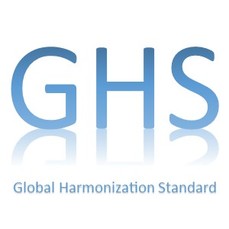 Sarah Lindsey, Staff Scientist at Schneider Risk Management SRM & Associates LLC. In 2012, OSHA updated its Hazard Communication regulation (29 CFR 1910.1200) to align with the United Nations Globally Harmonized System of Classification and Labeling of Chemicals (GHS), Revision 3. Some deadlines have already come and gone, and there are two deadlines left that you may need to be aware of: Chemical Distributors have until December 1, 2015, to update and ship all products under the new labeling requirements, and Chemical Users / Employers have until June 1, 2016 to finalize labeling and plans. by Bill Schneider
MIOSHA announced that beginning September 1, 2015, the state will implement the new federal injury reporting rules for severe injuries that became effective January 1st of this year. All Michigan employers will be required to report any work-related amputation, loss of an eye, or in-patient hospitalization of any employee, within 24 hours of the incident. Twenty-five additional industries have been included in these rules, too. |
|



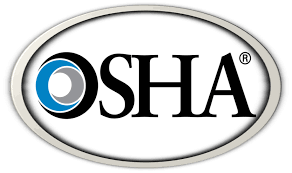
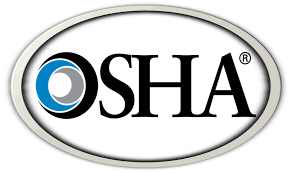

 RSS Feed
RSS Feed
